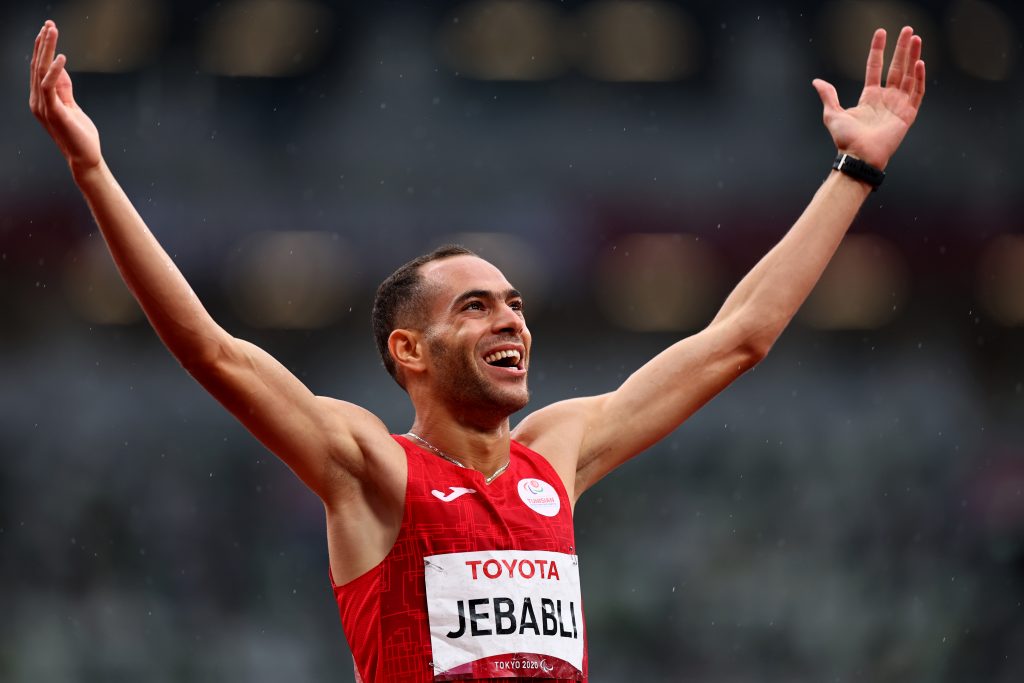With no international spectators and limited domestic crowds, the importance placed on broadcasting the Paralympic Games is greater than ever before. When the Games were postponed in 2020, International Paralympic Committee (IPC) President Andrew Parsons argued that the Paralympics were needed more than ever to put disability back at the heart of the inclusion agenda.
With the highest estimated global viewership to date, at 4.25 billion total viewers, Parsons was convinced that media representation of the Paralympic Games would help “change attitudes, breakdown barriers of inequality and create more opportunities for persons with disabilities.”
But has the media represented Paralympic athletes in a way that can change attitudes about disability? Our recent analysis found Canadian media coverage of Paralympians at the 2016 Rio Games fell into four main categories: athlete first, stereotyped, informative and multidimensional.
From a positive perspective, we found that many Paralympians were represented as athletes first. While not necessarily the most dominant approach, this frame was at the forefront of coverage.
In athlete first coverage, media referred to Paralympic sporting events as high-performance sport competitions, highlighted the dedication and training of athletes and focused on their results and accomplishments — all aspects of sports coverage we normally only see for able-bodied athletes.
Historically, this has not been the primary way of representing Paralympians, as stereotypical representations of disability remain prevelant. But we are starting to see this narrative used more often, especially with the coverage of the Tokyo Paralympics.
Despite the positive shift towards representing Paralympians as athletes first, stereotypical ways of covering Paralympians remain dominant in media coverage; this is the most common way they have been represented over the past two decades.
One of the most common stereotypes we saw used was the “supercrip narrative.” This narrative frames disability as an individual problem that a person must “overcome” to achieve success. Paralympians were heralded as “superheroes” because they were able to “overcome” their disabilities to participate in the Paralympic Games. The media often used the word “participate” and not “compete” when describing Paralympians.
Other stereotypical narratives of coverage we observed portrayed Paralympians as “cyborgs” whose success was owed to their adaptive technologies, such as running blades, rather than their athletic abilities.
We also observed “comparison” narratives where a Paralympian’s success was compared to an able-bodied counterpart, often an Olympic athlete who competed in a similar event. This was highlighted when Paralympic athletes achieved similar times in races as their Olympic counterparts. This appears to be a way for the media to justify the success of a Paralympian rather than celebrating their athletic abilities in their own rights.
Celebrating a Paralympian for “overcoming” their disability in order to “participate” in sport, rather than celebrating them as a high-performance athlete, devalues their athletic performance. This type of narrative perpetuates the idea that any person with a disability can overcome it if they just tried hard enough. This misrepresents the experiences of Paralympians and the everyday lives of people who live with disabilities.
Alongside these stereotypical representations, we also observed that only a select group of people with disabilities tended to be given coverage. Our research demonstrated that athletes with less visible impairments and more innovative technologies, such as wheelchairs or blades, were represented more in coverage than athletes with more visible impairments.
As a result, media coverage conformed to what society thinks an athletic body should look like, and ended up not representing the diversity of bodies and abilities that compete in sport. The issue of what bodies are acceptable at the Games and what ones are shown by the media continues to be hotly debated within the Paralympic movement.
The other two ways we observed Paralympians being represented was through informative and multidimensional frames. The informative frame focused on educating viewers about the Paralympic movement, disability sports and included articles written by Paralympians. The increase in media commentary from former Paralympic athletes supports this approach.
This is a step in the right direction, as it helps create a fan base for disability sport while providing a platform for Paralympians to share their perspectives and control their representation.
The multidimensional frame was another positive example of media coverage that addressed their roles outside of being an athlete. Stories that highlighted their roles as parents, spouses, children and friends were used to connect with audiences in a way that had been typically absent from Paralympic coverage previously.
The Tokyo 2020 Paralympics is the most widely broadcasted Games to date, and it’s encouraging to see a steady increase in the quantity and quality of coverage. The diversity of the coverage has also increased, and is comparable to what’s seen with able-bodied sports. It has also spread across a wide range of social media channels and platforms, such as TikTok.
What we hope to see, in terms of the quality of media coverage, is a focus on athlete first framing that steers clear of stereotypical representations of Paralympians. That way all athletes can be celebrated as the elite, high performance athletes they train to be.
Earlier, we asked if media representations of the Paralympics can change attitudes about disability. We think they can if Paralympians are represented in non-stereotypical ways. The Paralympic Games have the ability to raise awareness and start important conversations about disability, but it’s important to remember the context of what we are watching and to not homogenize the experience of a Paralympian as the everyday lived experience of people with disabilities.
What’s most important, however, is that conversations about disability, and campaigns such as #WeThe15 — a human rights campaign headed by the IPC and UNESCO to end discrimination against people with disabilities — continue beyond the Paralympics’ two-week life span. Tangible actions, not just rhetoric, need to occur 365 days a year to truly ensure that positive changes are made for people with disabilities across all areas of life.

